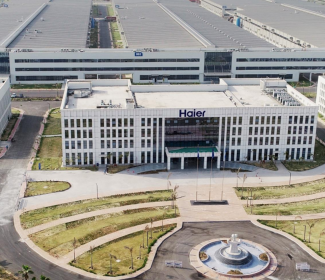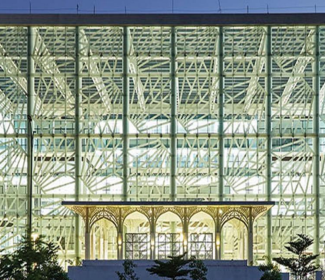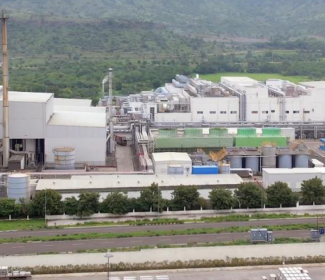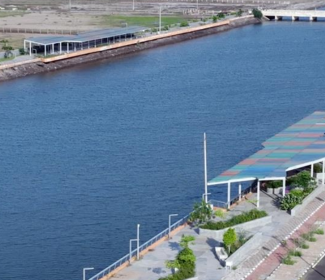India's journey towards becoming a developed nation by 2047 hinges significantly on improving its infrastructure, a cornerstone for fostering liveable, climate-resilient, and inclusive cities that drive economic growth. The government's commitment is evident through its allocation of 3.3% of GDP to the infrastructure sector in the fiscal year 2024, with particular focus on the transport and logistics segments.
Roads & Highways account for the highest share, followed by Railways and Urban Public Transport. The government has set ambitious targets for the transport sector, including development of 2 lakh-km national highway network by 2025 and expanding airports to 220. Additionally, plans include operationalizing 23 waterways by 2030 and developing 35 Multi-Modal Logistics Parks (MMLPs). The total budgetary outlay for infrastructure-related ministries increased from around INR 3.7 Lakh Cr in FY23 to INR 5 Lakh Cr in FY24, offering investment prospects for the private sector across various transport sub-segments. As the transport sector gears up to address sustainability challenges, the private sector stands poised to capitalize on the conducive policy environment to accelerate infrastructure investments. Public-Private Partnerships (PPPs) have served as a vital mechanism for private sector engagement across various infrastructure domains, notably in the construction of airports, ports, highways, and logistics parks throughout India. Besides support from the central government and states across various schemes, India needs a significant push from Public-Private Partnerships to achieve its goal of reaching a $5 Trillion economy by 2025.
In 2021, the government launched the PM Gatishakti National Master Plan (NMP) with a focus on major transport sectors to enhance multimodal connectivity infrastructure in various economic zones. It aims to bring together the infrastructure schemes such as Bharatmala, Sagarmala, UDAN etc. under a digital platform. The NMP offers a detailed database of trunk and utility infrastructure, ongoing and future projects from different ministries/departments of both the Central Government and States/UTs. Integrated with the GIS-enabled PM Gatishakti platform, this allows for streamlined planning, design, and monitoring of next-generation infrastructure projects on a single portal. As per the India Investment Grid (IIG) database, there are currently 15,580 projects worth $2388.93 Bn at various stages of development.
Alongside this, the National Logistics Policy, addresses the development of integrated infrastructure and efficiency in services, including processes and regulatory frameworks, through its Comprehensive Logistics Action Plan (CLAP). Together, the NMP and the National Logistics Policy provide a framework for creating a data-driven decision support mechanism to enhance logistics efficiency and reduce costs in the country's logistics ecosystem.
Major plans of Indian Infrastructure:
- Roads: The Bharatmala Pariyojana is progressing with Phase I focusing on developing 34,800 km of National Highways. It emphasizes corridor-based development and is set to conclude by 2027-2028, covering 31 States/UTs and over 550 districts. Additionally, the government targets building 22 new greenfield expressways, signalling significant advancements in India's transportation infrastructure.
- Airports: The Ministry of Civil Aviation's flagship Regional Connectivity Scheme UDAN (Ude Desh Ka Aam Nagarik) aims to enhance air connectivity to regional airports in small towns. Launched in 2016, UDAN focuses on making flight services accessible to common citizens by developing infrastructure and air connectivity. In its first 5 years, UDAN served over one crore passengers, inaugurating 425 new routes and 58 airports. The Budget for 2023–24 allocated INR 1,244.07 Cr to UDAN, doubling the previous year's budget, with plans to revive 22 airports. Additionally, the government outlined the revival of 50 additional airports, heliports, water aerodromes, and advanced landing grounds.
- Railways: India's railway sector is undertaking ambitious projects such as the Mumbai-Ahmedabad Speed Rail Corridor, the world's highest pier bridge under construction, and the Chenab bridge in Jammu & Kashmir - the world's highest railway bridge. With a total Broad Gauge network of 61,508 km electrified as of December 2023, the sector has also introduced 35 indigenously designed Vande Bharat Express trains, with six more set to launch soon. These trains serve up to 247 districts across the country. Indian Railways aims to become a Net Zero Carbon Emitter by 2030, with 211 MW of solar plants and 103 MW of wind power plants commissioned as of October 2023, along with 2150 MW of renewable capacity tied up.
- Ports: Indian Ports "Turn Around Time" has reached 0.9 days which is better than USA (1.5 days), Australia (1.7 days) and Singapore (1.0 days), as per the World Bank's Logistics Performance Index (LPI) Report 2023. Sagarmala, the flagship Central Sector Scheme of the Ministry of Ports, Shipping and Waterways, promotes port-led development in the country through harnessing India’s 7,500 km long coastline, 14,500 km of potentially navigable waterways and strategic location on key international maritime trade routes. The Union Minister for Ports, Shipping and Waterways said that the country’s total port capacity will increase from the existing 2,600 MTPA (Mn Tonnes per annum) to more than 10,000 MTPA in 2047. From April to November 2023, cargo of 86.47 MMT moved through Waterways as compared to 80.44 MMT during April to November 2022, i.e. an increase of 7.49%. The government also aims to operationalise 23 waterways by 2030.
Private sector participation is vital for financing key infrastructure projects in India, given the government's fiscal constraints and the need for prudent spending. India launched the National Infrastructure Pipeline (NIP), in 2020 which envisages an investment of INR 111 Lakh Cr over 2020 to 2025 i.e., an annual average investment of almost INR 22 Lakh Cr. Public Private Partnerships (PPP) have been identified as a valuable instrument to speed up infrastructure development and investments envisaged under NIP. Involving the private sector promotes industry competitiveness, enabling access to a wider talent pool and enhanced resource utilization. There are several PPP projects currently in pipeline across sectors such as the development of Pune metro line 3, Hyderabad and Bengaluru metro extensions, development of multi modal logistics park in Chennai, and more.
It is essential for India to prioritize the development of both urban and rural areas to ensure overall national progress. By 2030, it is projected that 40% of India's population will reside in urban areas, contributing significantly to the country's GDP. However, rapid urbanization poses challenges in managing infrastructure and delivering services effectively. The Smart Cities Mission is a key initiative aimed at addressing these challenges efficiently. As of February 2024, 6,753 projects out of a total of 7,991 have been completed under the Smart Cities Mission, showcasing tangible progress. Moreover, India has made significant strides in digital infrastructure development, with rural areas expected to contribute significantly to new internet user growth, with around 56% of total new internet users coming from rural India by 2025, according to a report by TransUnion CIBIL. This trend underscores the increasing connectivity between rural and urban regions in the country.
Conclusion
The infrastructure sector plays a pivotal role in driving India's economic growth and overall development. As the country continues on its path towards becoming a global economic powerhouse, the need for robust infrastructure becomes increasingly apparent. Private sector partnerships have emerged as crucial enablers in this endeavour, bringing in much-needed investment, innovation, and efficiency. By leveraging public-private partnerships (PPPs), India can accelerate infrastructure development while ensuring sustainability and inclusivity. These partnerships not only help bridge the financing gap but also foster competition, encourage technological advancements, and promote best practices in project execution. Ultimately, the collaboration between the government and the private sector is essential for creating resilient, future-ready infrastructure that paves the way for a prosperous and sustainable future for all citizens of India.
- https://www.indiabudget.gov.in/doc/bspeech/bs2023_24.pdf
- https://pib.gov.in/PressReleasePage.aspx?PRID=1834748
- https://pib.gov.in/PressReleasePage.aspx?PRID=1925480
- https://pib.gov.in/PressReleasePage.aspx?PRID=1978774#:~:text=The%20plan%20also%20includes%20increasing,as%20per%20the%20Vision%20Document
- https://pib.gov.in/PressReleaseIframePage.aspx?PRID=1941381#:~:text=Further%2C%20Ministry%20of%20Road%2C%20Transport,MMLPs)%20under%20Bharatmala%20Phase%201
- https://indiainvestmentgrid.gov.in/index.jsp
- https://pib.gov.in/PressReleaseIframePage.aspx?PRID=1988824#:~:text=PM%20GatiShakti%20National%20Master%20Plan,infrastructure%20to%20various%20economic%20zones&text=Hon'ble%20Prime%20Minister%20launched,infrastructure%20to%20various%20economic%20zones
- https://pib.gov.in/PressReleaseIframePage.aspx?PRID=1993425
- https://www.cnbctv18.com/aviation/budget-2024-highlights-udan-allocation-18941081.htm
- https://pib.gov.in/PressReleaseIframePage.aspx?PRID=1991568
- https://www.businesstoday.in/industry/top-story/story/india-targeting-300-increase-in-port-handling-capacity-by-2047-shipping-minister-394771-2023-08-20
- https://smartcities.gov.in/
- https://www.thehindubusinessline.com/news/56-of-new-internet-users-to-be-from-rural-india-by-2025-report/article67282295.ece#






